Timesheet Templates
-
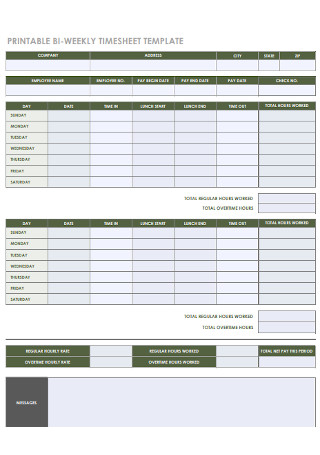
Printable Bi-Weekly Timesheet Template
download now -
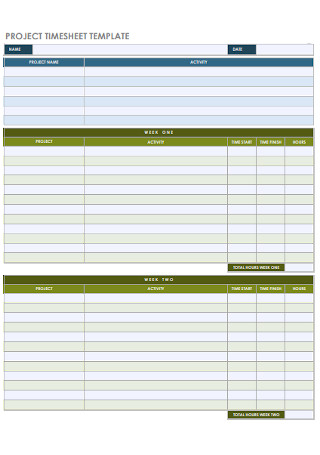
Project Timesheet Template
download now -
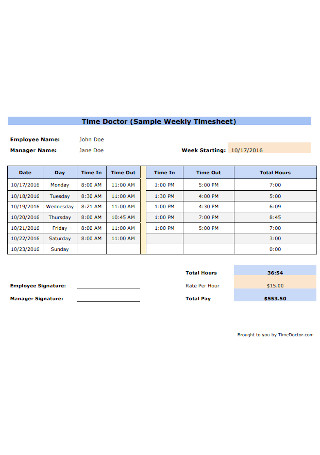
Sample Weekly Timesheet
download now -
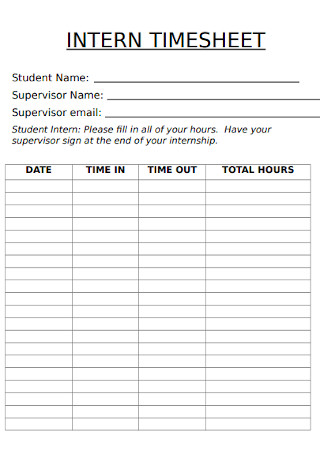
Sample Intern Timesheet Template
download now -

Employee Time Sheet With Lunch
download now -
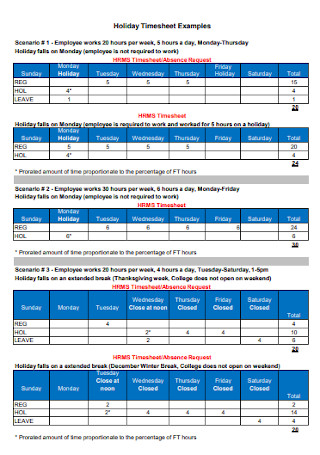
Holiday Timesheet Examples
download now -
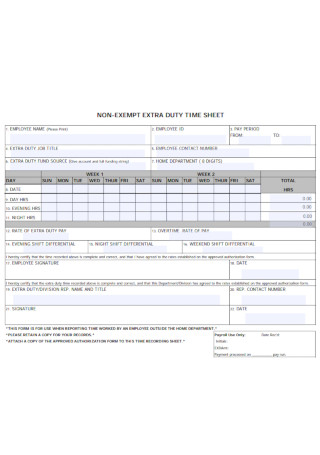
Non-Exempt Extra Duty Timesheet
download now -
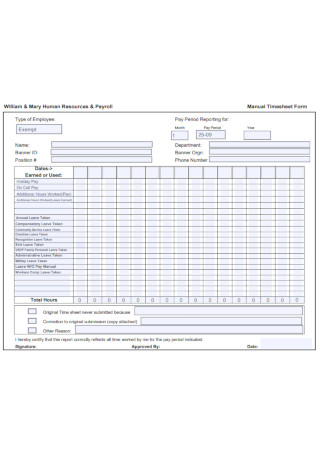
Manual Timesheet Form
download now -
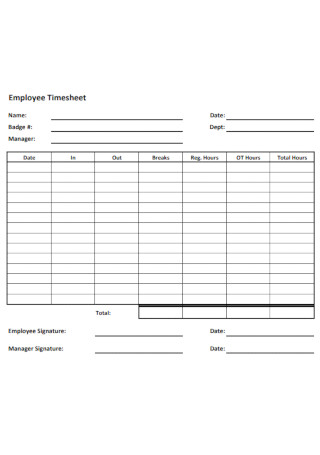
Employee Timesheet Timesheet
download now -
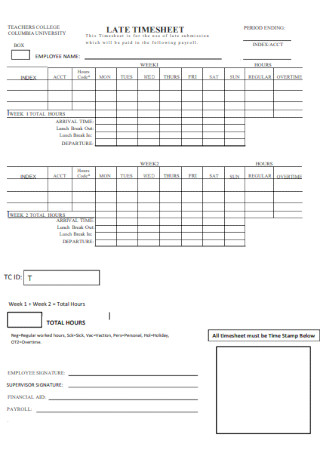
Sample Late Timesheet Template
download now -
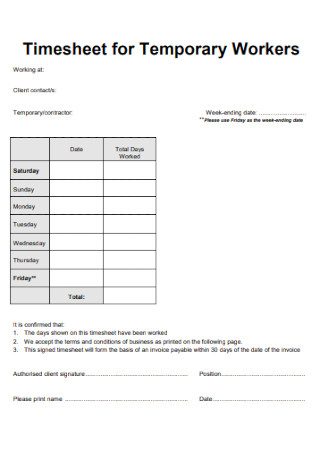
Timesheet for Temporary Workers
download now -
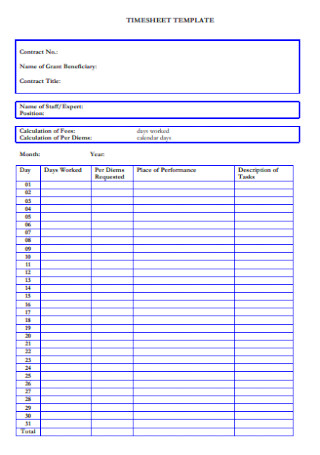
Basic Timesheet Template
download now -
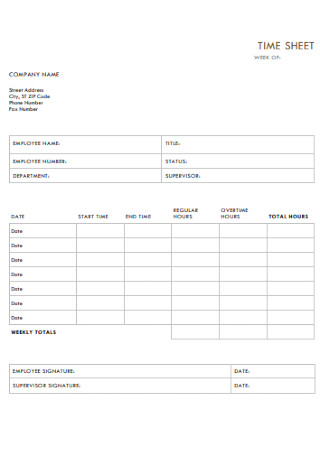
Company Timesheet Template
download now -
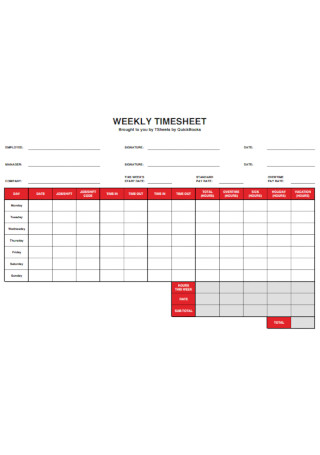
Sample Weekly Timesheet Template
download now -

Sample Salaried Employee Time Sheet
download now -
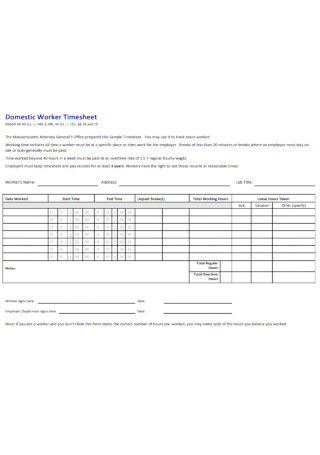
Domestic Worker Timesheet
download now -

Basic Timesheet Example
download now -

Health Staff Timeshhet
download now -
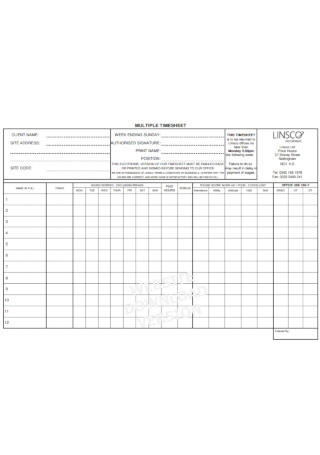
Sample Multiple Timesheet
download now -
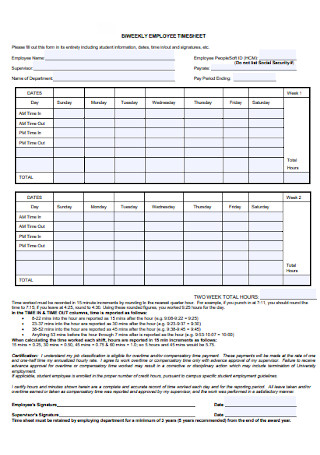
Bi-Weekly Employee Timesheet
download now -
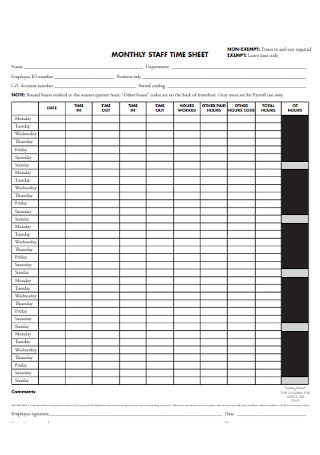
Monthly Staff Timesheet Template
download now -
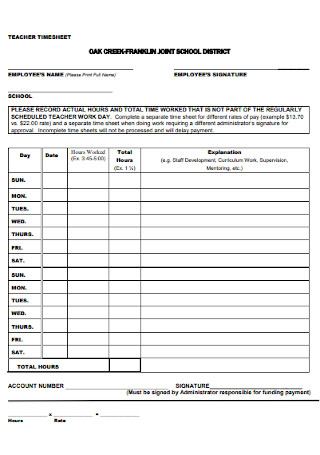
Sample Teacher Timesheet
download now -
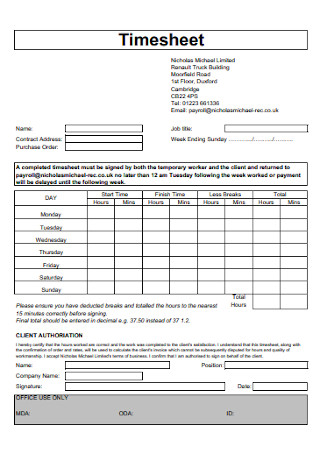
Simple Timesheet Template
download now -
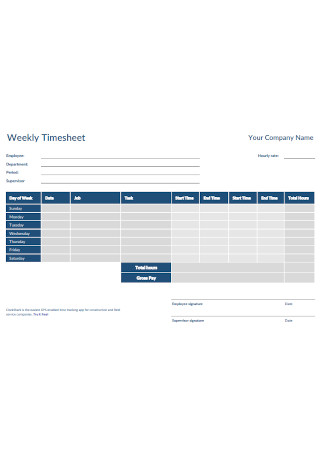
Company Weekly Timesheet
download now -
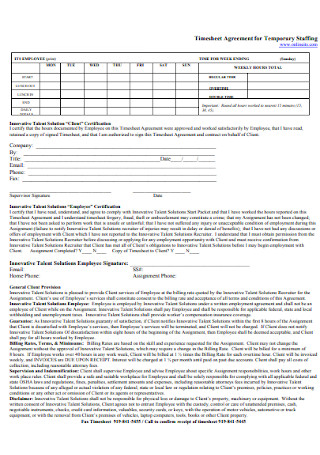
Timesheet Agreement for Temporary Staffing Template
download now -

Sample Recruitment Timesheet
download now -
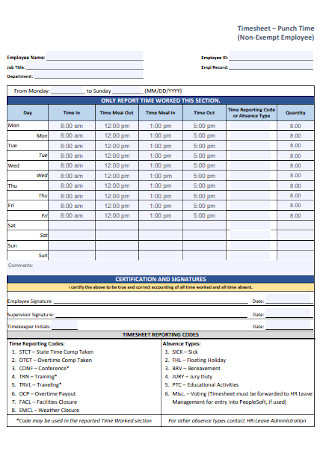
University Employee Timesheet
download now -
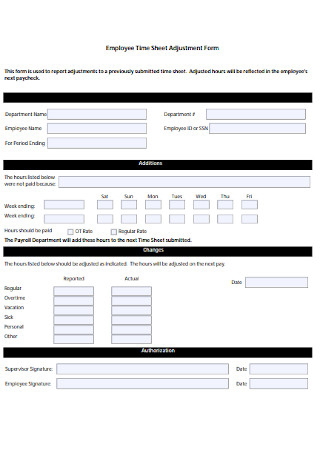
Employee Time Sheet Adjustment Form
download now -
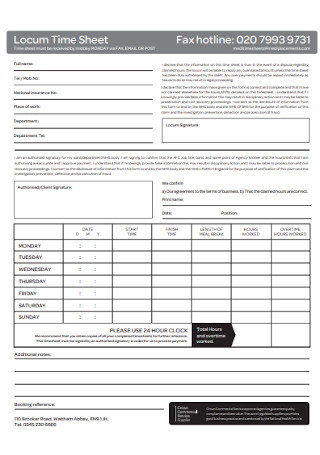
Sample Locum Time Sheet
download now -
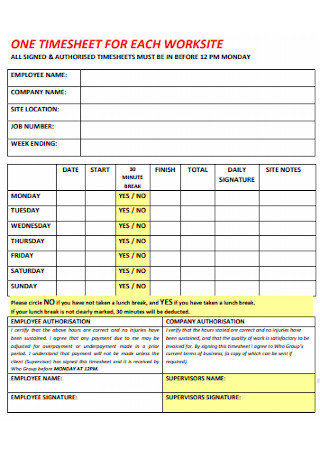
Timesheet for Each Worksite Template
download now -
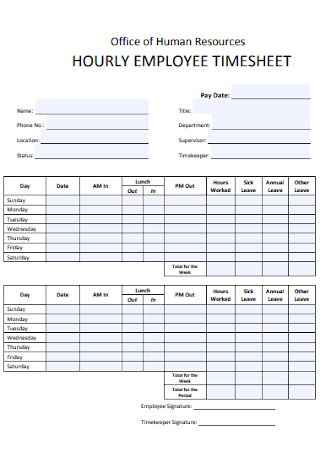
Office of HR Hourly Employee Timesheet
download now -
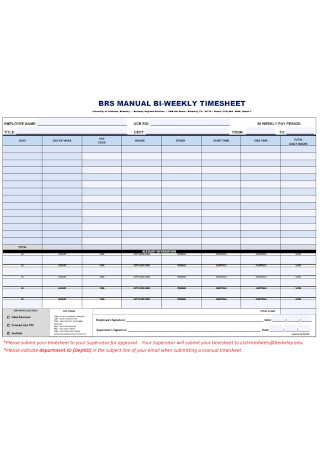
Sample Mannual Bi-Weekly Timesheet
download now -
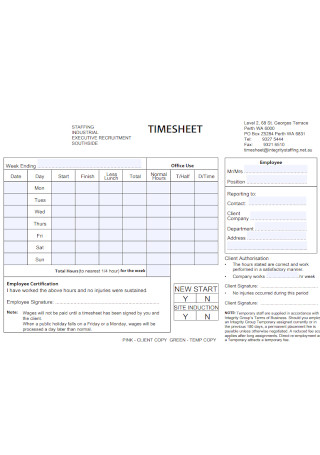
Industrial Staff Timesheet Template
download now -
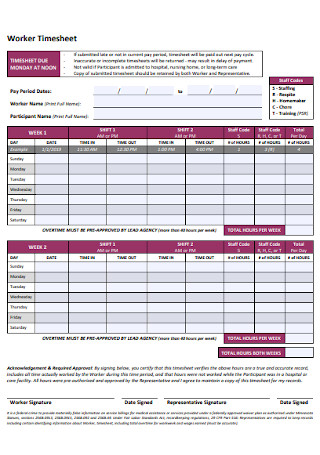
Sample Worker Timesheet Template
download now -
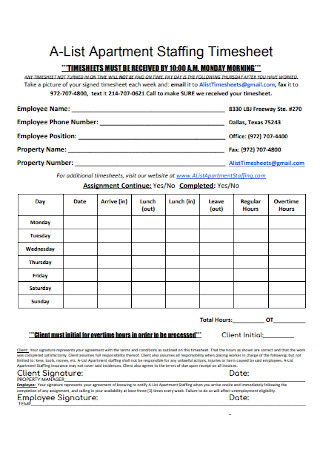
Apartment Staffing Timesheet
download now -

IndiVidual Employee Timesheet Template
download now -
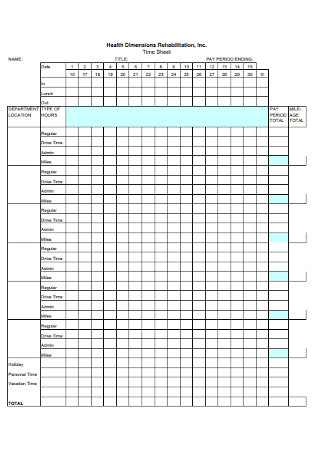
Health Dimensions Rehabilitation Timesheet
download now -
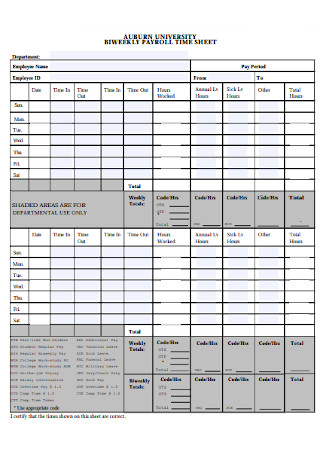
Bi-Weekly Payroll Timesheet
download now -
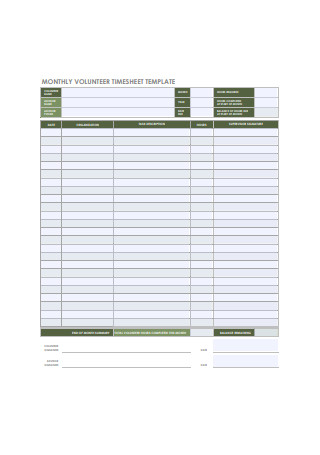
Monthly Volunteer Timesheet
download now -
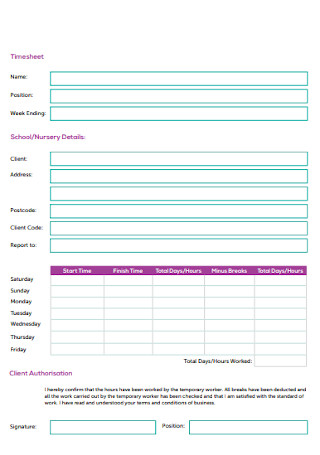
Sample Education Timesheet Template
download now -
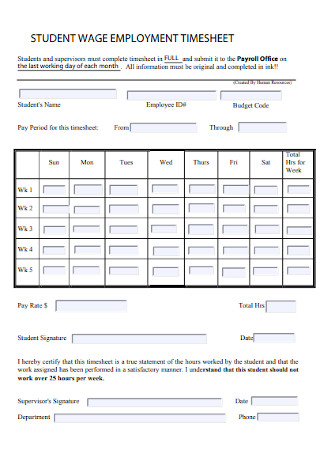
Student Wage Employement Timesheet
download now -

Basic Monthly Timesheet Format
download now -

Standard Timesheet Template
download now -
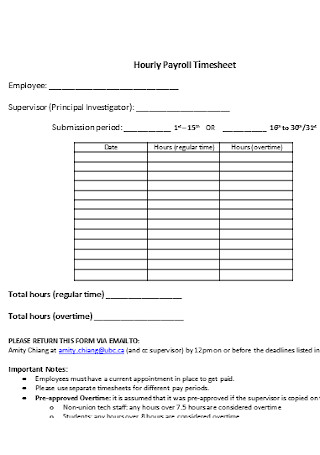
Hourly Payroll Timesheet Template
download now -
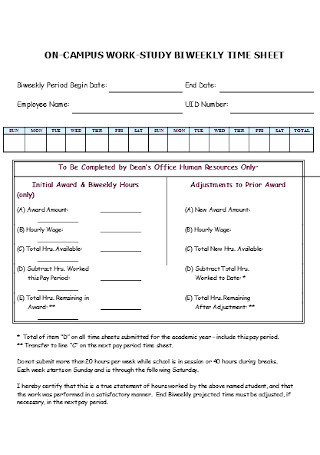
On-Campus Work Study Bi-Weekly Timesheet
download now -

Formal Timesheet Template
download now -
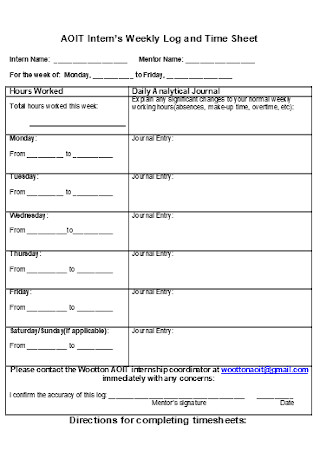
Weekly Log and Timesheet Template
download now -
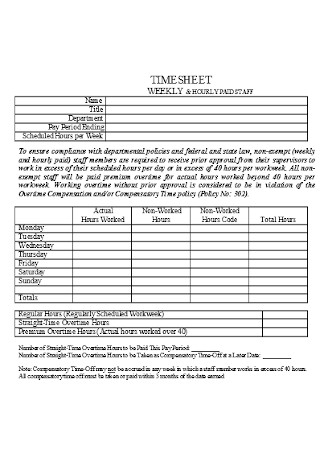
Sample Hourly Paid Staff Timesheet
download now -

Printable Timesheet Template
download now -
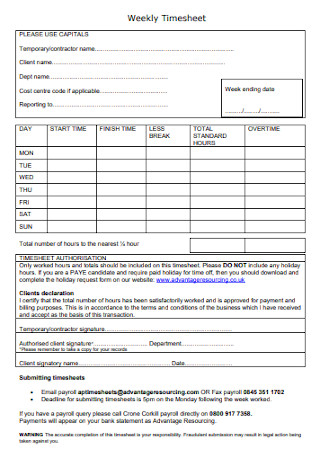
Sample Weekly Timesheet Example
download now
FREE Timesheet s to Download
Timesheet Templates
What is a Timesheet?
Elements of a Timesheet
Importance of a Timesheet
How To Create a Timesheet
The Dos and Don’ts in Creating a Timesheet
FAQs
What is the common use of a timesheet?
Is using timesheet a good idea?
What are the benefits of using a timesheet?
Is the timesheet confidential?
What is a Timesheet?
A timesheet is an essential tool used by the Human Resource team of a company to help ensure that the employees are reporting to work regularly. It keeps a record of the personnel’s working hours as well as their breaktimes. With a timesheet at hand, employers will be fully aware of the number of hours the employee has spent for the completion of a particular project. Oftentimes, the information that reflects on the sheet determines the wages of each employee who are working for the company.
Last January 2017, CareerBuilder conducted a survey with over 6,000 respondents, wherein 2,600 of them are human resource managers and the rest are workers in various industries. The results revealed that 29% of the employees said they came in late for work at least once a month.
Meanwhile, 53% of human resource personnel are expecting that their staff will report to work on time.
In addition to that, 41% of employers have fired an employee due to tardiness.
Elements of a Timesheet
The findings of the survey mentioned above indicate that aside from productivity, attendance is a crucial aspect in the workplace. For this reason, employers should make sure that they monitor the attendance of the employees so as to maximize workforce efficiency. In this short guide, we will explore more about the basics of timekeeping.
If you are a human resource personnel, you already know that keeping track of the employees’ attendance is vital when you start sorting out the payroll during a pay period. Timekeeping will be easier if you have a clear understanding of the necessary elements of a timesheet. Provided below is an outline of the key components of a timesheet to help you discover the structure and format of the document.
Employee Information
The timesheet should have the necessary information about each employee who worked within the company. These details include their name, contact number, employee ID, department, and supervisor. If the employees’ identification are not specified on the document, they might not receive proper compensation for the work they do. Assigning identification numbers for each employee would also be helpful especially in companies that have a large workforce.
Date and Time
The primary purpose of a timesheet is to keep track of the number of hours the employees spent in accomplishing work-related tasks or projects. Doing so will not be possible without an accurate record of the date and time. The timesheet should indicate the following details: current date, day of the week, time in, time out, and the total hours the employee has rendered for work. See to it that the employees record the exact work time, break time, and the time allotted to do specific tasks.
Tasks Accomplished
Listing down the tasks accomplished on a particular time frame helps the employees prove that they make good use of their time during the company’s working hours. Moreover, it gives the management a clearer picture of how long can each employee carry out their respective duties. Through this, they can identify which specific tasks take too much time to accomplish or which areas cause delay so they can address the issue accordingly.
Pay Period
The pay period is the time covered in which employers pay their staff for the time they spent at work. It is a recurring schedule that runs from one pay date to another. In addition, the pay period varies from one company to another—it can be weekly, bi-weekly, monthly, or bi-monthly. In a span of one year, employers need to issue a total of 52 paychecks to their employees if they opt for a weekly pay period. On the other hand, there will be a total of 26 paychecks issued for a bi-weekly pay period. It is important to indicate the pay period on the timesheet so that employers wouldn’t lose track of the payment schedules and payroll settlements.
Other Information
Data from the United States’ Bureau of Labor Statistics showed that last January 2018, approximately 4.2 million workers failed to report to work due to illnesses, injuries, and other medical appointments. While some employers don’t provide paid sick leave to their employees, others give paid medical leave because state laws mandate them to do so. In the event that an employee misses work and the company provides a paid sick leave, it should be indicated on the timesheet. Other information such as overtime operation, paid holiday, and/or paid time off (PTO) should also be on the spreadsheet.
Importance of a Timesheet
Aside from keeping track of the employees’ working hours, a timesheet bears a great significance for both the employers and employees. We ran through the importance of a timesheet beforehand. Now, we will expound more on its value and the purpose it serves in the workplace. As you continue reading this article, you will fully understand why you need to make use of a timesheet in your company.
Calculation of Payroll
A timesheet can help employers calculate the payroll for each employee within the company. The number of total working hours rendered, leaves, differentials, accruals, and other salary adjustments will be the basis in determining the total amount of wages and/or bonuses the employees will receive during payday. Moreover, the data entered must be accurate and complete to eliminate the possibility of payroll errors.
Billing Clients
Timesheets are also essential in service-based industries. Take for example law firms—lawyers charge their clients on an hourly basis. That is why it is vital to have an up-to-date record of the time they exhausted in providing legal services to their clients. Having a timesheet helps in billing the clients accurately, and as a result, the person who provides the service will receive proper compensation and payment. Furthermore, it guarantees the clients that the expenses they incurred in availing a particular service will be worth it. A comprehensive timesheet will let the clients have a clearer picture of how professionals handle the projects entrusted to them.
Increase Workforce Productivity
When employees get to see the exact number of hours they spent working on a particular project, they will have a clearer idea of which aspect they should improve on to increase productivity. Then, once they figure out what causes the delay of the completion of the tasks, they can make necessary adjustments like weeding out unnecessary activities. Discovering how workers spend their time is essential especially when they are trying to meet deadlines or hit quotas on a daily basis.
Improve Project Management
An accurate and up-to-date timesheet is a great tool in improving project management. With a calculated time estimation, employees can properly allocate the time to do various tasks towards the completion of a project. It also helps project managers oversee the strengths and weaknesses of each employee. Through this, the managers can assign workers in tasks where they can utilize their skills at the very best. On the other hand, identifying the weaknesses of the staff will help managers assess whether or not it would be best to provide additional training.
How To Create a Timesheet
Long before the rise of technology, timesheets are literally pieces of paper that a company’s management makes use of to keep tabs on their employees’ working time. Nowadays, digital innovations make timekeeping a whole lot easier. With the right resources and software applications, everything is good to go. If you are in the process of creating a timesheet, follow the steps provided below to accomplish the task swiftly.
Step 1: Know the Laws
You already know that the primary purpose of a timesheet is to track the work hours of an employee. Provided that it is the basis for the pay they will receive for a particular pay period, you should familiarize yourself with the federal and state laws you need to comply with. Research about the regular rates for various occupations, overtime pay, additional pay, paid leave, and others. If you are in the United States, read about the Fair Labor Standards Act. This federal law dictates several employment regulations which cover from child labor standards to minimum wages.
Step 2: Include the Company’s Information
After having a full understanding of the laws, you can already start working on the timesheet. The first thing that should appear in the document is the company’s information. This includes the company’s name, complete address, contact number, and company logo. Every document you make for your company should have a header to maintain formality and to provide a company identity.
Step 3: Type in Employee Identity
As mentioned earlier, one of the most important components of a timesheet is the employee’s information. Its purpose is to provide each employee with the right wages, salaries, and other benefits. The timesheet should have the name of the employee, identification number, and contact number. Aside from that, other information such as the department where the employee belongs to, the supervisor’s name, and the manager’s name should also be on the top portion of the sheet.
Step 4: Create a Data Table
Tables help make numerous information easy to comprehend and understand. For your timesheet to be more organized, create a data table that would present the following details: date of the day, day of the week, name of the project, starting time, end time, break time, work hours, and overtime hours. Be sure to provide enough blank cells for each section so that the employees can input necessary details later on.
Step 5: Leave Spaces for Signatures
It is not mandatory to have the timesheets signed by both the employees and the managers. However, doing so gives the project managers or employers an assurance that the information reflected on the sheet is factual and accurate. If you want your employees to sign the document before submitting it, make sure to provide signature lines at the bottommost portion of the sheet.
The Dos and Don’ts in Creating a Timesheet
An article from Medium states that companies first made use of timesheets in the 19th century. During that era, timesheets were referred to as time books which keep a record of the tasks, work hours, and workdays of each employee. Everytime an employee reports to work, he/she will stamp the sheet or card with the use of a time clock machine. Although the advent of technology paved the way for other methods of timekeeping, the regulations of the process remain unchanged. Here are the dos and don’ts in creating a timesheet to help you improve employee time-tracking.
Dos
1. Do mandate employees to keep track of their work hours.
There is a wide array of time-tracking tools a company can make use of. Some examples include time tracking applications, punch cards, biometrics, spreadsheets, and others. However, an accurate record of time spent in carrying out a task remains on the hands of the employees. This is why, you have to require each employee to note down the time they spent doing work-related tasks even when they make use of the technology outside of the workplace.
2. Do ensure transparency.
Transparency helps foster trust and improve employer-employee relations within the company. If you are a manager, you should be transparent on how you calculate the worker’s wages based on their respective work hours. Deductions from their regular salary due to absences and tardiness should also be thoroughly explained.
3. Do keep the timesheets.
The Fair Labor Standards Act of 1938 mandates each employer to preserve timesheets and other records used for wage computations for at least two years. Moreover, payroll records should be kept for at least two years. These records must be available for inspection by the Department of Labor. Aside from this federal law, it is essential that you know whether there are state laws regarding the preservation of timesheets.
Don’ts
1. Don’t forget to back-up your data.
There is always a Plan B for things that wouldn’t work out the way they should be. A back-up plan keeps you going when you are facing unexpected challenges along the way. The significance of Plan B equates with the importance of having a data back-up. Without an extra copy of the file, you might not be able to recover data in case you deleted it accidentally. Keep your employees’ individual timesheets and make sure to have duplicates. Moreover, don’t just rely on an online tool for time tracking, you should have a quarterly or a weekly compilation of important data and save it outside of the software.
2. Don’t withhold pay.
There are instances wherein workers fail to submit their timecards or timesheets. However, this does not give employers the freedom to withhold their pay. As stated in the Fair Labor Standards Act, it is the responsibility of an employer to keep a record of their employees’ work hours. And if an employee does not comply with the company’s timekeeping process, the human resource manager can request the supervisor or department head to confirm the number of working hours an employee spent for them to receive proper compensation.
3. Don’t neglect federal and state laws.
As the famous saying goes, “Ignorance of the law excuses no one.” With this in mind, you should know that part of your obligation as an employer is to have a clear understanding about the laws regarding labor and employment. Not just that, you should observe strict adherence to it to save your company from unnecessary troubles.
FAQs
What is the common use of a timesheet?
Timesheets are of various types and various uses. However, in a business setting, the most common use of a timesheet is to calculate the working hours of employees for the payroll process. This allows employers to have a proper insight of the synchronization of the number of employees and their productivity levels.
Is using timesheet a good idea?
Yes. Timesheet is one of the essential tools used in the Human Resource department in tracking the time an employee has worked during a particular period. It also allows businesses to identify and record the time utilized for projects and tasks.
What are the benefits of using a timesheet?
Timesheets are useful HR managing sheet that monitors employee attendance to ensure they are reporting to work on time. Besides that, utilizing a timesheet also provides you various benefits. A timesheet helps simplify the payroll process, increases productivity, efficient project tracking, tracks billable hours, and improves time management.
Is the timesheet confidential?
Unlike other business documents, a timesheet is not confidential. It should be made accessible by the team, especially if the timesheet is for a project. With this, the team will be able to know who is working on this and that.
As stated in an article from Forbes, an average employee steals nearly 4 hours and 30 minutes from their employer over the course of a week. This number results to approximately six full working weeks of stolen time for the entire year. When you look at the larger scale, this blunder in the corporate world known as time theft has cost companies a fortune. Time theft occurs when a worker receives payment from the company even when they don’t spend their time for work-related tasks during office hours. It can take in many forms such as having extended lunch breaks, buddy punching, and sleeping. Time theft may be hard to get away with, but preventing this from happening is obtainable. This is when timesheets become highly significant in a company. Timekeeping will help you save your company from time thieves. And with the absence of this type of employees in the workplace, projects get done efficiently which would ultimately save your company’s time and resources.
